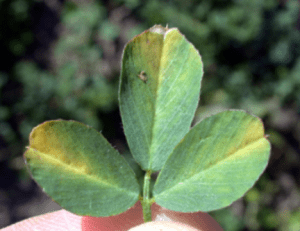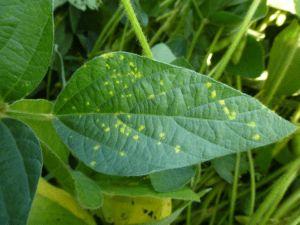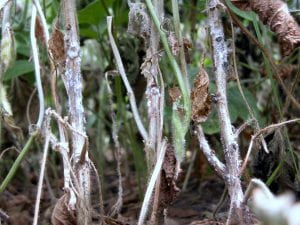The big concern right now is preparing for corn silage harvest which is covered in other articles. I do want to cover a few reminders about potential pests here.
Potato Leafhopper
Populations of Potato Leafhopper have gone over threshold in some fields. New seedings are the more vulnerable target. It is worth keeping an out for this tiny insect. The best way to evaluate numbers is with a sweep net. If you walk into a field and kick foliage lot of bugs will fly around or be noticeable but not all are harmful and many are beneficial. Although aphids can be plentiful an economic threshold has never been set. By planting resistant varieties you will rarely have to worry about damage from this insect after the seeding year.

Corn Diseases – Is Treatment Warranted?
I have heard reports of Northern Corn Leaf Blight (NCLB) and Grey Leaf Spot infections in the areas where there are commonly infections, along river valleys or areas where fog settles. I recommend checking the crop in vulnerable environments and BMR varieties. Protecting late planted corn could be especially important if it is infected prior to tassel. When disease is present fungicide applications will help protect yield potential and help maintain healthy tissue that can photosynthesize to produce sugars to drive ear development and maturity.
Unfortunately there are no set thresholds for infection levels. If your corn has lesions and has a lot of growth and development to go there will be a benefit from protecting the plants with a fungicide application. When the disease infects after the ear is developing the need for protection is diminished. The crop may look ugly at harvest but the crop is basically made. Since there is a lot of late planted corn this year it is worth checking and applying fungicide protectants if necessary.

Soybeans
Beans are showing good pod development. There are several pests to keep an eye out for as you are visiting your fields.
I have seen downy mildew symptoms. The general consensus from land grant institutions is that treatment does not pay for itself. There are little yellow spots on the leaves but there is still plenty of healthy leaf tissue to photosynthesize so impact on yield is not significant.
According to University of Minnesota Extension: “Downy mildew is a widespread disease that occurs during periods of high humidity and moderate temperatures. The disease is typically superficial and causes no yield loss, but can cause defoliation of plants and reduced yields under rare conditions.”

Check for soybean aphids and signs of white mold. I have not seen a heavy infestation of aphids like what is shown in this picture for several years. When the population is significant look for beneficial insects in the field, like ladybugs and syrphid fly larvae. If the population of aphids is low or moderate the beneficial insects might be able to keep the population in check.

I would like to hear if your beans get infected with white mold and whether you treated with a fungicide. Earlier in the summer I was using the Sporecaster app to assess risk of white mold development and it gave me a risk of 24%, when the beans were in the v3 stage. Threshold for treatment was greater than 40%.


